Keywords
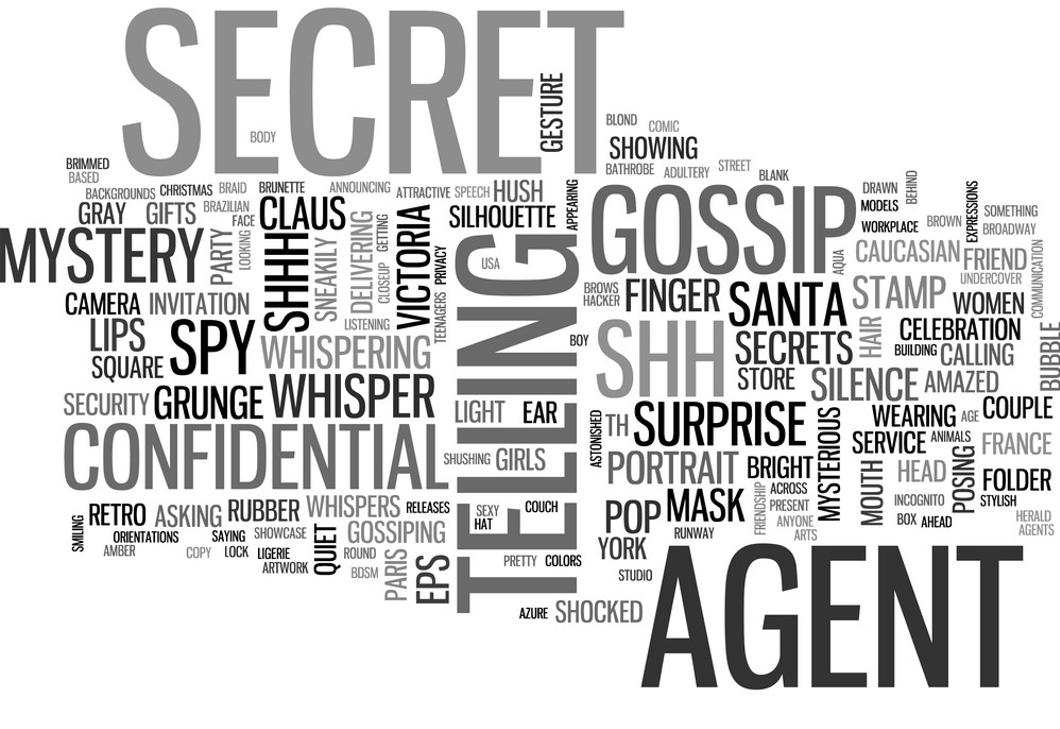
Keywords describe the constellation of terms associated with a set of core concepts. They consist in the operating understandings of terms of art to acknowledge their more contemporary valences and applications. A collection of keywords is like a glossary for the uninitiated, one that tells us how to navigate a conversation or hold on to important, commonly repeated words.
Paired Reading
- Melley would insist that we add the keyword "melodrama" to the collection of keywords below. Which of the keywords below would melodrama relate to most closely? How is melodrama related to rhetoric? What is unique and/or important about melodrama that would make it a good keyword for the rhetoric of secrecy and surveillance?
Recordings for this Entry
- "Secrecy and Surveillance" (Audio Only)
Please note that the recording above is supplementary. It covers some of the same topics discussed below, but there is no exact parity between this entry and the recorded lecture.
Spectacle
Spectacle is the final “secrecy” term I’d like to talk about. It is attributable to Guy Debord’s 1988 Comments on the Society of the Spectacle, which is a frequent reading for this class. The core idea of the spectacle is that it is a complex public performance that holds the attention of the mass public. As rhetorical critic Jennifer Merceica explains,
Earlier in the 20th century, Debord explained, we knew things because we experienced them directly (and one’s sphere of information and influence was necessarily very small). But by the second half of the 20th century, we had expanded our sphere of information to such an extent that we knew things only because we learned about them from media sources—most, if not all, of our knowledge had become mediated by others.
The spectacle is about a shift in knowing -- from the knowing gotten from experience to the knowing gotten from media representations. The spectacle can occur because televisions are fixtures in every home and there is no cross-communication between people. There is a complete unity insofar as people exist in complete isolation from one another. The spectacle is constantly talking about itself. It is about its own self-worship, it doesn’t refer to anything but itself. We are, for instance, sucked into the spectacle when millions of people tune in or engage in the same consumerist habits at the same time. It is the imagined space where subjects define their value in terms of a marketplace of unequally distributed data. The term “spectacle” also describes “value” in terms of the ideas and goals that allow us to feel worthy in our own eyes; such as when we aspire to the same status as token celebrities or fall for misleading political rhetoric. By drawing attention to one thing after the next, one crisis after another, the spectacle demands all of our attention, but makes it impossible to focus it. As Debord writes, “With consummate skill the spectacle organizes ignorance of what is about to happen and, immediately afterwards, … forgetting ... . The more important something is, the more that it is hidden.” That’s the logic of the spectacle: it keeps us tuned in because there is always another secret, revelation or valuable piece of information to grab our attention.
Paranoia
The word "paranoia" is relevant to the study of secrecy and surveillance for two reasons. On the one hand, it describes a kind of psychological disposition that was frequently pathologized in the 20th century. Excessive paranoia was associated with schizophrenia, tantamount to a form of psychological insanity resulting in institutionalization. According to psychologist and professor Jonathan Metzl, this diagnosis was weaponized against African Americans in connection with their civil rights ideas. Meanwhile, the American Psychological Association (APA) prevented racism from inclusion in the Diagnostic and Statistical Manual, despite the objections of Black psychologists.
On the other hand, paranoia also rose to prominence as a term of art in the 20th century in association with prominent cultural scholars like Max Horkheimer and Richard Hofstadter. Horkheimer described the "authoritarian personality" as a characteristic anti-Semitic style and demeanor, such as the use of contradictory arguments to denigrate Jewish people as unworthy of social, political, and human recognition. Richard Hofstader's "The Paranoid Style in American Politics" describes the "paranoid mentality" as the signature style of evangelical preachers, political demagogues, and anti-communist conspiracy mongers. The paranoid mentality describes the pathos of conspiracy theories and connects it with rhetoric, in the sense of a strategy of persuasive speaking.
The typical procedure of the higher paranoid scholarship is to start with … defensible assumptions and with a careful accumulation of facts, or at least of what appear to be facts, and to marshal these facts toward an overwhelming “proof” of the criminal conspiracy that is to be established. It is nothing if not coherent – in fact, the paranoid mentality is far more coherent than the real world, since it leaves no room for mistakes, failures, or ambiguities. It is, if not wholly rational, at least intensely rationalistic; it believes that it is up against an enemy who is as infallibly rational as he is totally evil, and it seeks to match his imputed total competence with its own, leaving nothing unexplained and comprehending all of reality in one overarching, consistent theory.
It’s this “mentality” that Hofstadter identifies in the late 1950s, and which is a reflection on events of the past one-and-a-half centuries. In The Paranoid Style in American Politics, these ‘events’ include the anti-masonic movement, the rise of evangelical and political demagogues in the United States, and their mainstreaming with figures like Joseph McCarthy and Robert Welch, who founded the anti-communist John Birch Society.
Metaphor
The word “metaphor” is often attributed to Aristotle, who mentions it explicitly in the Rhetoric. In Greek, it is the composite of meta (over) and phereas (to carry). It can be defined as a figure of speech in which two dissimilar things are said to be similar, offering a new perspective on a known issue. Metaphor provides “perspective” by activating a range of cognitive associations. Metaphors are “Non-literal comparisons in which a word or phrase from one domain of experience is applied to another domain.” Most importantly, they transfer the characteristics of one object (a vehicle) onto a second object (the tenor).
For example, if I were to say “my roommate is a pig!,” pig (sign 2) would be the vehicle because I am attempting to transfer characteristics of ‘pig-ness’ onto them. My roommate is the tenor (sign 1) because they are the literal person, subject, or topic that I am trying to describe.

Metaphors construct a social reality because the habitual or unconscious use of metaphor creates the texture of our experiences, social surroundings, and expectations of others. We could think, for instance, of how often we describe social or professional situations in terms of implied violence or hostility, thereby setting the expectation and reflecting the reality that our social and work lives are violent. When life is war, we conceive of aspects of our reality in warlike terms. “They attacked my argument” or “I shot down her point” are ways of imagining oneself as a speech-combatant in which the other person is the enemy. When debates or arguments are battles, then they are framed implicitly as things to be won and lost, rather than spaces for shared understanding. If for instance, we moved to the metaphor of "arguments as dance," perhaps this vehicle would allow us to instead imagine ourselves as partners who are practicing with one another or collaborating.
Metaphors structure our perceptions of social reality, especially public representations of war. One famous example is the Bergdahl Incident. Bowe Bergdahl was a United States Army soldier who was held captive from 2009 to 2014 by the Taliban-aligned Haqqani network in Afghanistan and Pakistan after he deserted. Bergdahl was captured after deserting his post on June 30, 2009. The circumstances under which Bergdahl went missing and how he was captured by the Taliban have since become subjects of intense media scrutiny. He was released on May 31, 2014, as part of a prisoner exchange for five high-ranking Taliban members who were being held at the detention center at Guantanamo Bay. However, because the event occurred at approximately the same time as the Showtime television show Homeland, the story of Nicholas Brody, a former prisoner of war, many news outlets compared the Bergdahl event to an unrelated fictionalization.
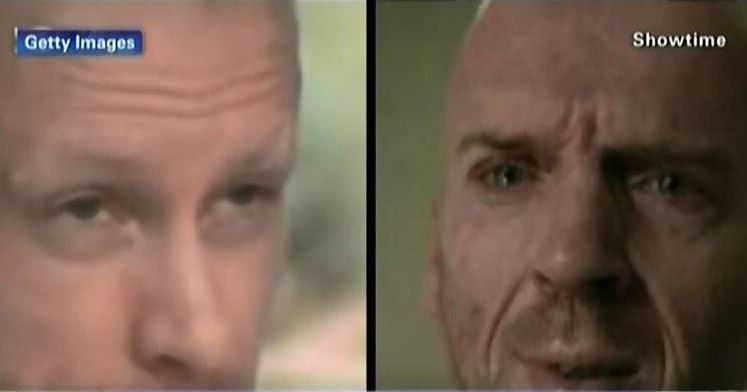
According to rhetorical theorist Roger Stahl in "A Clockwork War: Rhetorics of Time in a Time of Terror," the "war on terror" inaugurated by the George W. Bush presidential administration created a social environment that relied upon a whole network of time-based metaphors. It was during the war on terror, for instance, that the "ticker" on major news networks was repurposed to post stories (rather than stocks). The television show "24," newly popular in the wake of September 11, 2001, used a ticking clock from episode to episode to compress viewers' sense of time and to heighten their experience of a terroristic emergency.
Metaphors of time, such as the ticking clock and the countdown, create what he calls a “chronotopia” that stresses immediacy, constancy, and emergency. American perspectives on the war on terror are also structured by an entire media ecology designed to steer attention away from the perspective of non-American peoples who suffer the terror of the war on terror.
Secrecy
Secrecy is a mode of managing sensitive information that is crucial to the survival of political order (like that of the Roman empire or a 20th-century government bureaucracy) or social collectivity (like a secret society or movement). It is a way of making hidden, of producing concealment. When I say “nothing to see here,” clearly there is. When I mark something as “classified” or “confidential,” I immediately give it a kind of value that no public document has. If I say to you, “this stays between us,” it means that the information is important, and it means we are now in a relationship, in which you understand that you should treat this conversation as an exception to the rule that you should say nothing. Secrets take the presumption of publicness and create power because they create the impression that something is hidden, missing, or absent. This class is about how communication makes both of these things happen: surveillance and secrecy.
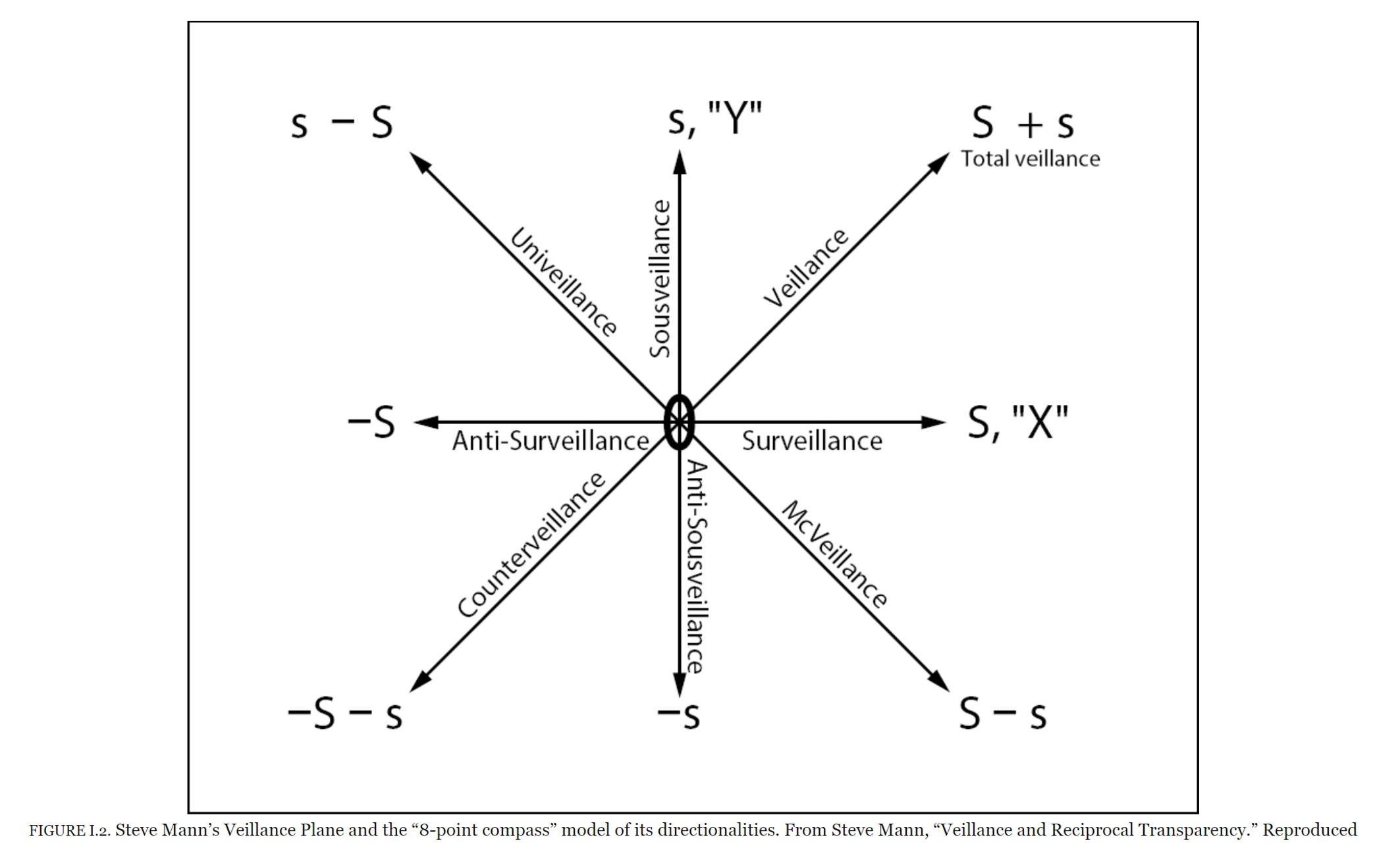
Surveillance
Legend for Mann's diagram provided above:
- Veillance = Sousveillance + Surveillance
- Counterveillance = neither Sousveillance nor Surveillance
- Surveillance = the observation or recording of an activity by a person not participating in the activity.
- Anti-surveillance = not surveillance, anything that interrupts surveillance.
- Sousveillance = The recording of an activity from the perspective of a participant in the activity.
- Anti-sousveillance = not sousveillance, anything that interrupts sousveillance.
- Univeillance = Sousveillance - Surveillance. One party in a conversation may legally record a conversation without notifying the other parties.
- McVeillance = Owners and employees of many businesses or institutions assert rules/policies that dictate a kind of "sensory entitlement" over people who enter their premises.
Surveillance describes the condition of being watched or under observation. It includes forms of being watched in which the observed does not know that surveillance is happening, such as the famous Milgram “shock” simulation or Zimbardo “prison” experiment. According to surveillance studies scholar Torin Monahan, “surveillance … is a longstanding form of control and the predicate to growth. But it has always had a paradoxical other side. The right to anonymity, to being a stranger, is just as much part of modernity as is the trade-off with security.” Surveillance demands critique and counterbalancing by practices that afford us a reasonable right to privacy. If we live in public as a default, under the watch and scrutiny of cameras, bank records, and social media, then the concept of surveillance is useful as a way to diagnose the many ways that we are watched.
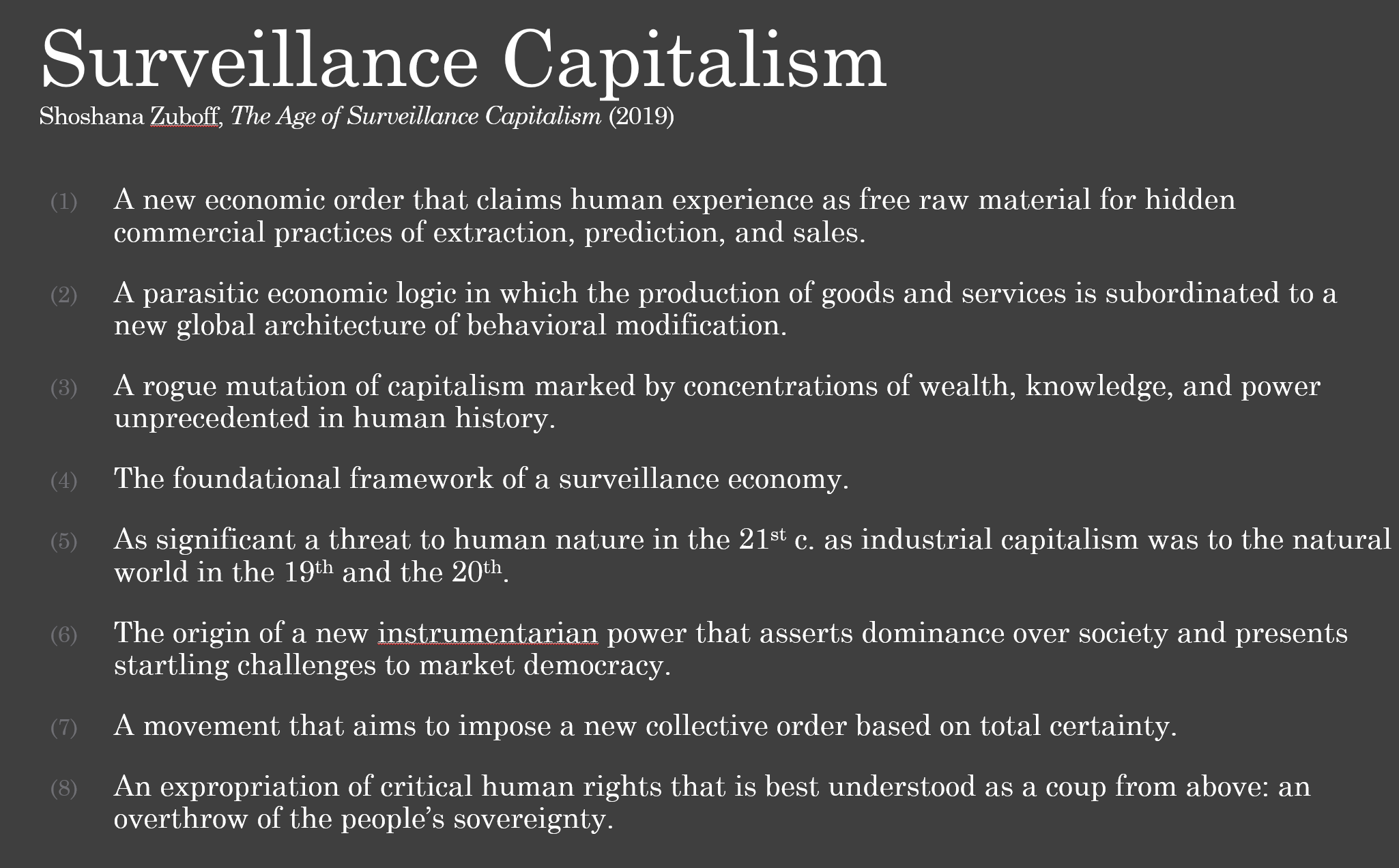
Although surveillance originates as a strategy of quarantine to separate the infectious from the uninfected, today, it means something both broader and more insidious. The buying and selling of data make it seem like there is little choice except to be surveilled. It is an active chore to keep ourselves or our information private. Surveillance is packaged as an appealing or even addictive commodity. Listening devices like Siri and Alexa live on our phones and in our homes, where they become virtual “assistants” that repeat gendered roles imagined to be a thing of the past. Surveillance is not equally distributed. Police surveillance falls primarily upon minoritized communities. Government surveillance results in the policing and disciplining of gender. During wars, surveillance is commensurate with the ability to destroy what is seen. Under the weight of surveillance. “living in public” can be a stressful fact.
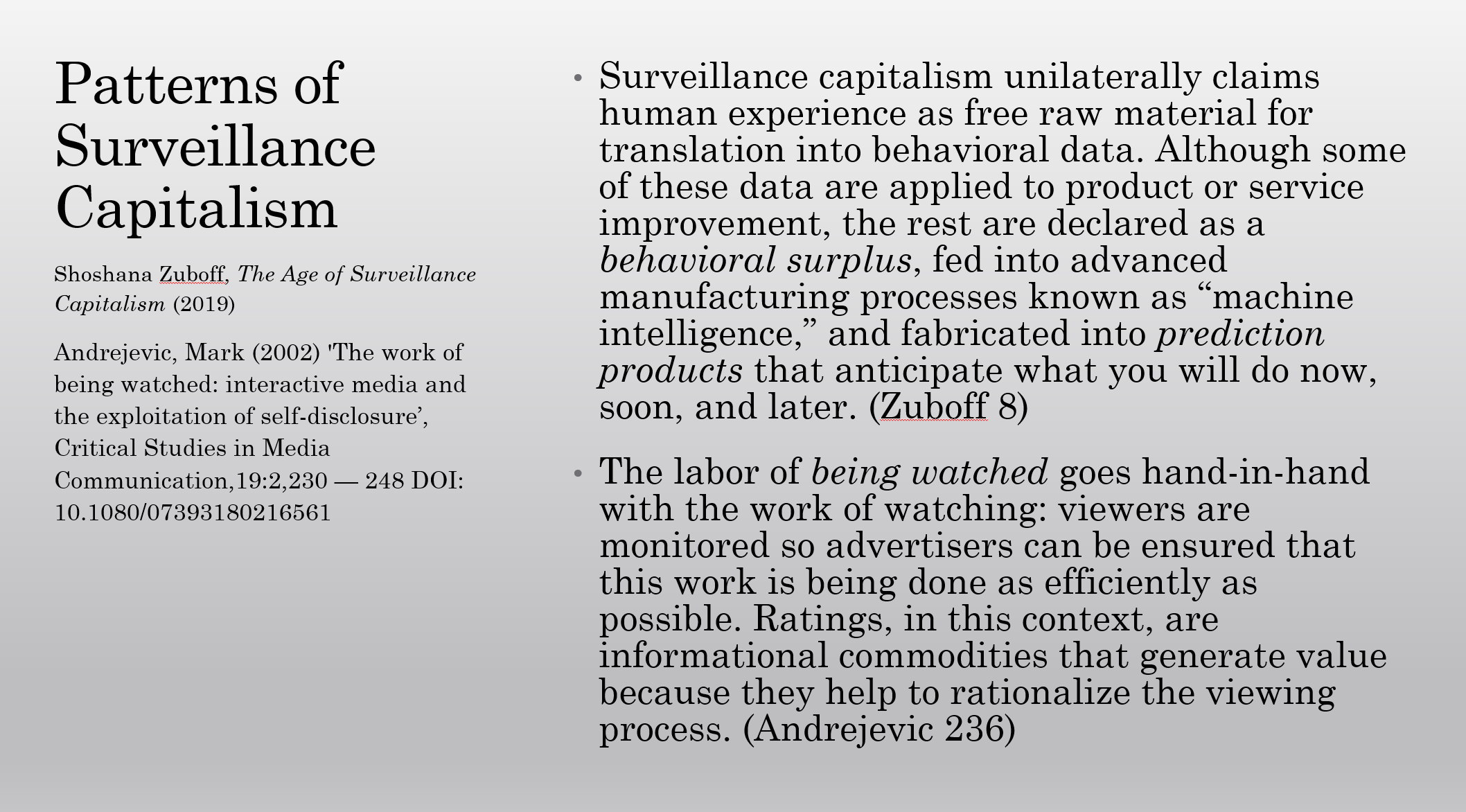
Surveillance is a dynamic concept because it can mean very different kinds of “watching”. Some scholars including Shoshana Zuboff and Virginia Eubanks describe “surveillance capitalism” as the system of belief and market structure by which we as consumers are enticed to embrace the “new normal” of surveillance through “smart” assistants freely given social data. Other scholars like Safiya Umoja Noble and Simone Browne describe digital and economic incentives to surveil as structures that reproduce racism. In Browne’s words, “racializing surveillance is a technology of social control where surveillance practices, policies, and performances concern the production of norms pertaining to race and exercise a “power to define what is or out of place.”
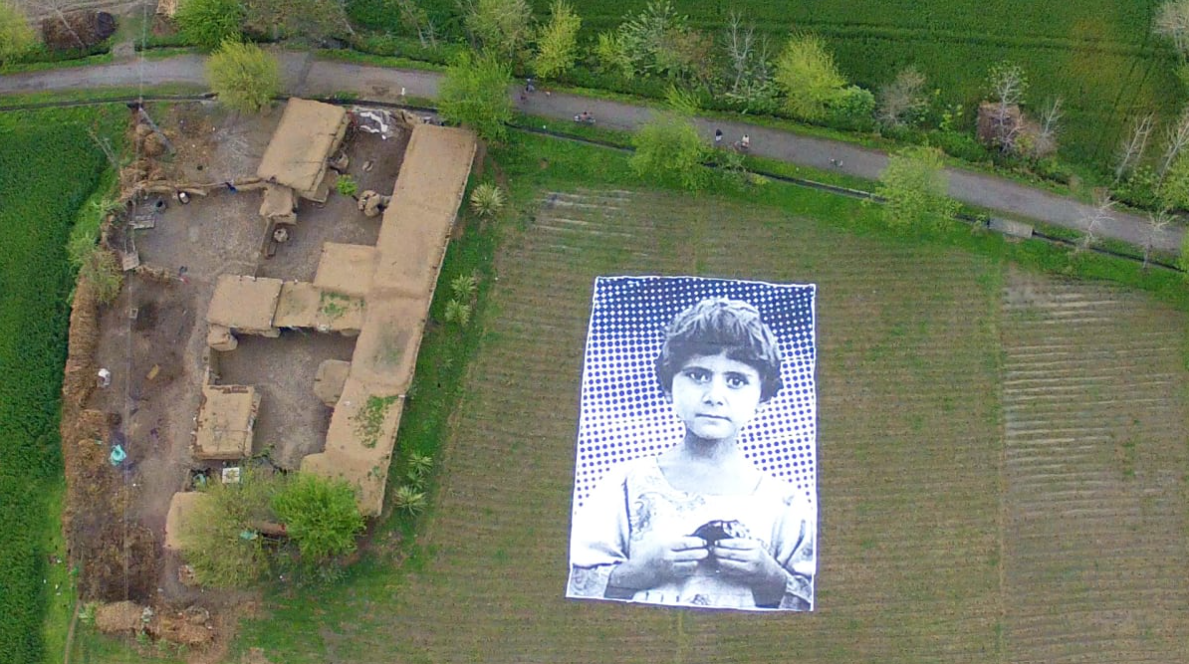
Sousveillance
Surveillance also poses the possibility that the watchers might either jam surveillance technologies or “look back.” To account for some variants upon and modes of resistance to surveillance, Steve Mann coins the term “sousveillance,” among others, to think of the participant in the activity of being watched as a potential watcher. These form the basic coordinates for secrecy, surveillance, and ‘looking back.’ Ultimately, these are tools for assessing the degree to which people are forced to live on display, in the spectacle, or in public, as well as their options for managing their publicness.
Required Secondary Readings for UMN-TC
- Melley would insist that we add the keyword "melodrama" to the collection of keywords below. Which of the keywords below would melodrama relate to most closely? How is melodrama related to rhetoric? What is unique and/or important about melodrama that would make it a good keyword for the rhetoric of secrecy and surveillance?
Additional Resources
Academic Books and Articles
- Edwin Black, "Rhetorical Secrets/Rhetorical Mysteries"
- Beryl L. Bellman, "The Paradox of Secrecy"
- Gary T. Marx, Windows Into the Soul: Surveillance and Society in an Age of High Technology
- Steve Mann, “Veillance and Reciprocal Transparency,” IEEE Symposium
- Torin Monahan, "Surveillance as Cultural Practice"
- Donald W. Winnicott, "Communicating and not Communicating Leading to a Study of Certain Opposites"
- Niklas Luhmann, "Speaking and Silence," "The Improbability of Communication," and "Tautology and Paradox in the Self-Descriptions of Modern Society"
Rhetoric and Media Studies
- Rachel E. Dubrofsky and Shoshana Magnet (eds.), Feminist Surveillance Studies
- Ryan Neville-Shepard, "Paranoid Style and Subtextual Form in Modern Conspiracy Rhetoric"
- Roger Stahl, "A Clockwork War: Rhetorics of Time in a Time of Terror"
- Guy McHendry, Key Concepts in Surveillance Studies
Melodrama and Metaphor in Showtime's Homeland and the Bergdahl Incident
- What ‘Homeland’ and ‘The Manchurian Candidate’ tell us about Bowe Bergdahl’s return - The Washington Post
- Bowe Bergdahl, ‘Homeland,’ and the kindness of strangers - The Boston Globe
- CNN Seriously Comparing Bowe Bergdahl to Brody From Homeland
- The Bergdahl Saga Is Nothing Like 'Homeland' - Business Insider
- What ‘Homeland’ and ‘The Manchurian Candidate’ tell us about Bowe Bergdahl’s return - The Washington Post
- As Bowe Bergdahl Heals, Details Emerge of His Captivity - NYTimes.com
To Cite This Page
- Atilla Hallsby (2022), "Keywords" in The UnTextbook of Rhetorical Theory: The Rhetoric of Secrecy and Surveillance. https://the-un-textbook.ghost.io/secrecy-and-surveillance-keywords/. Last Accessed (Day Month Year).
